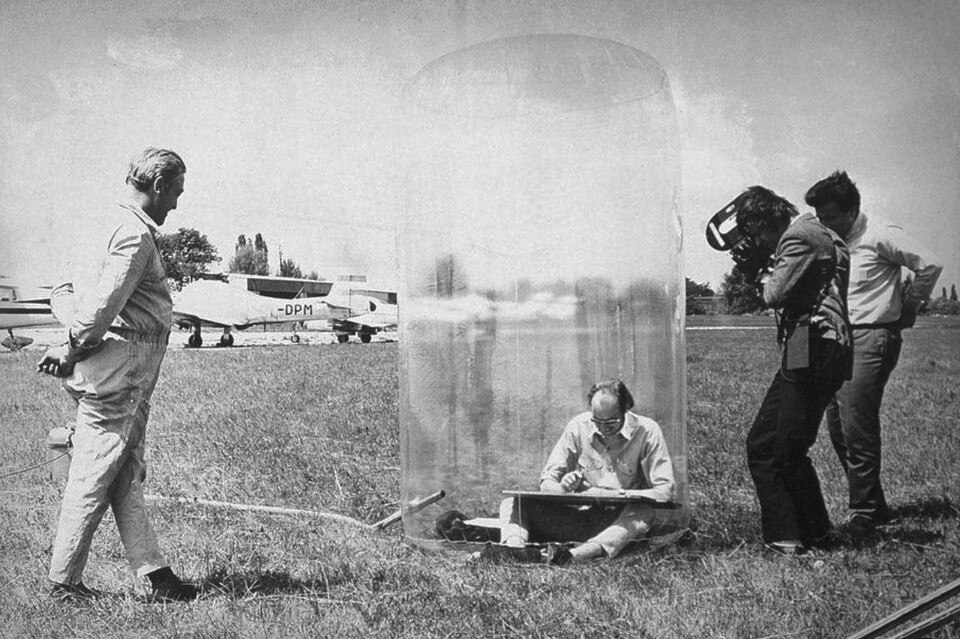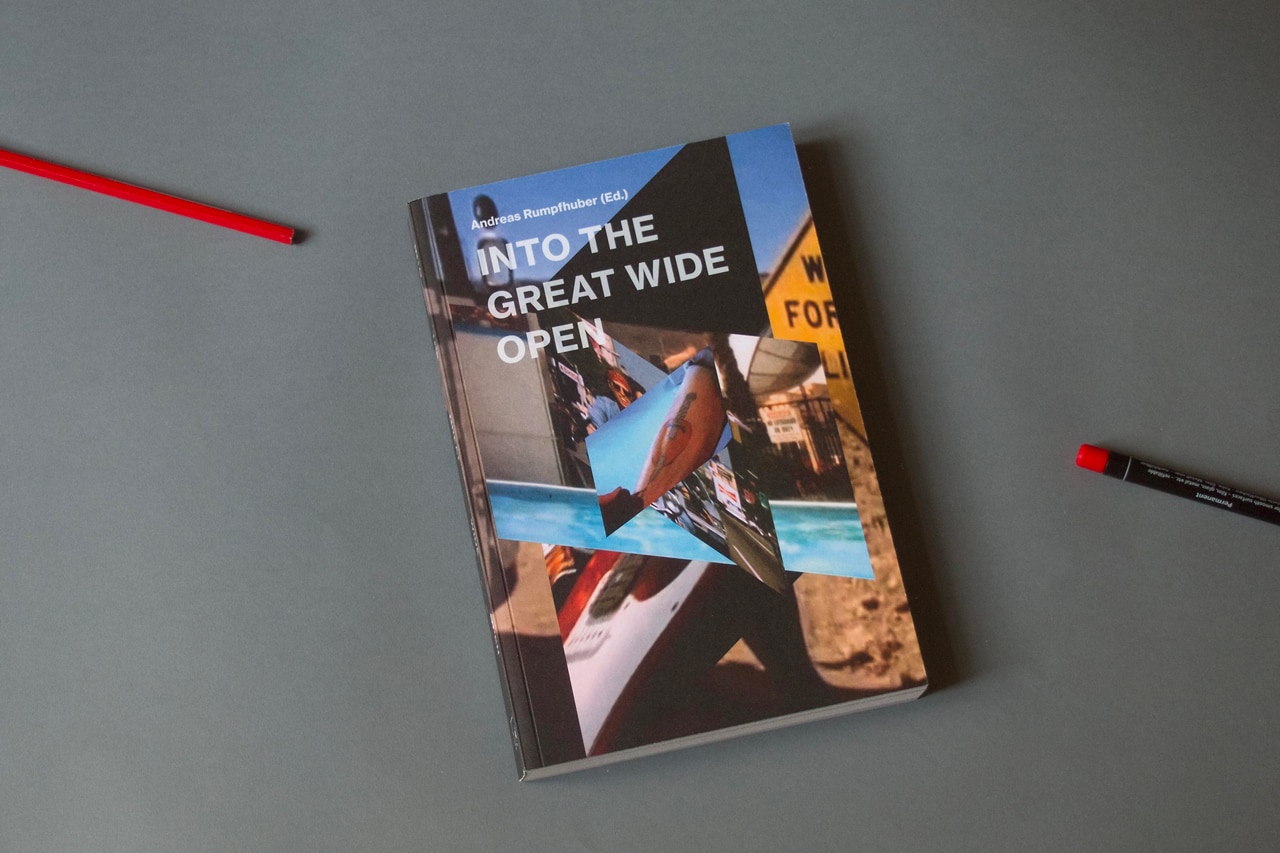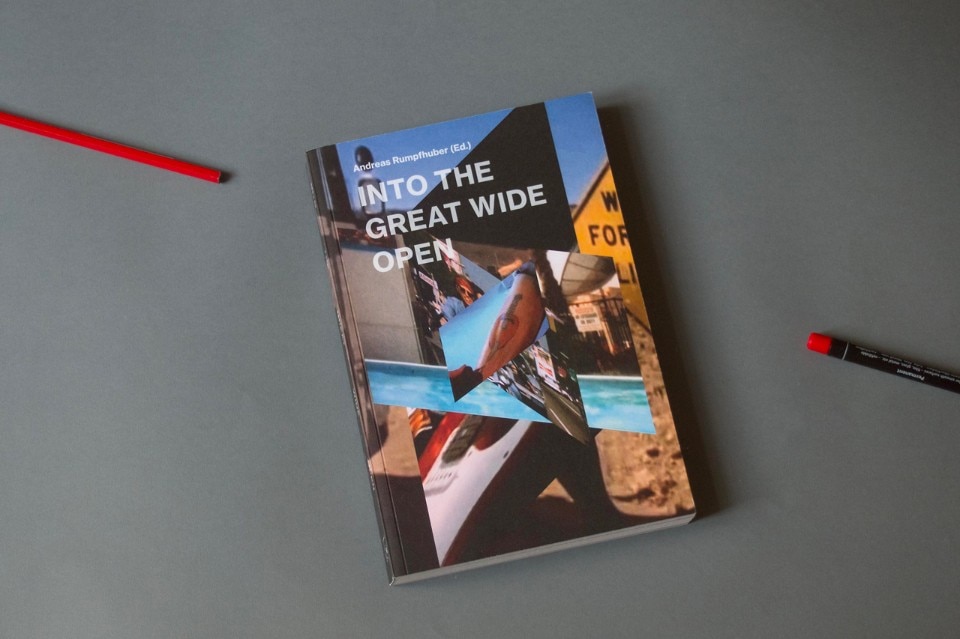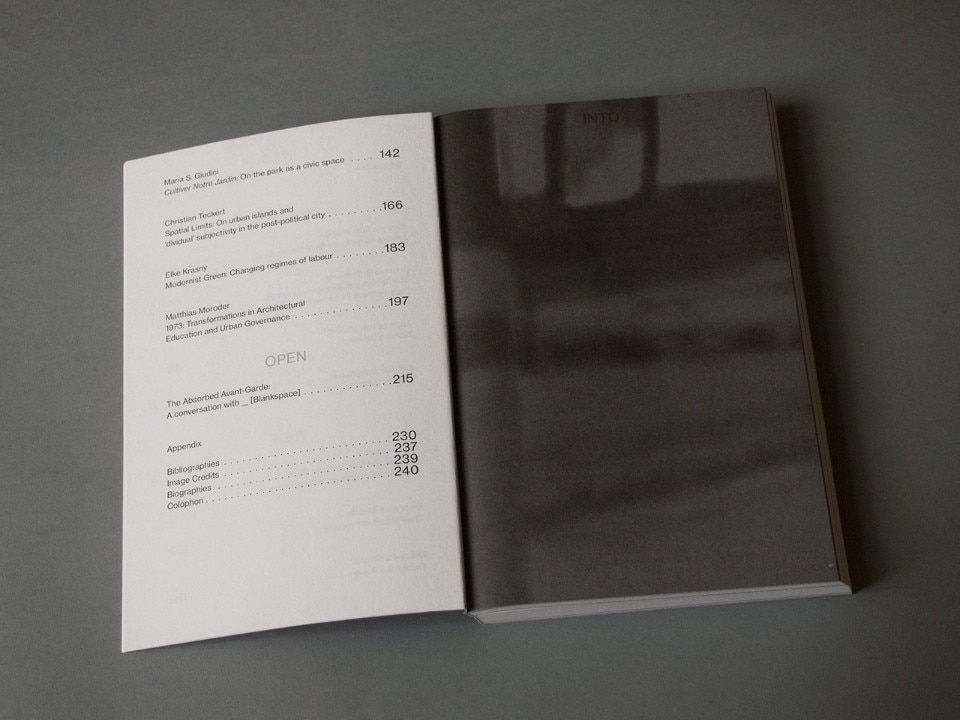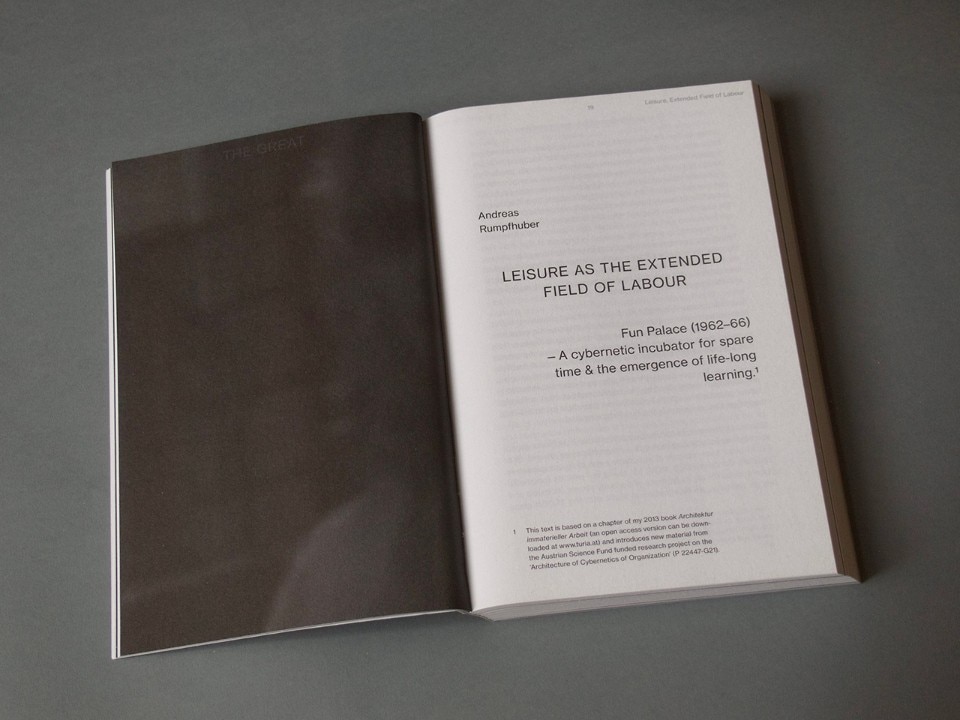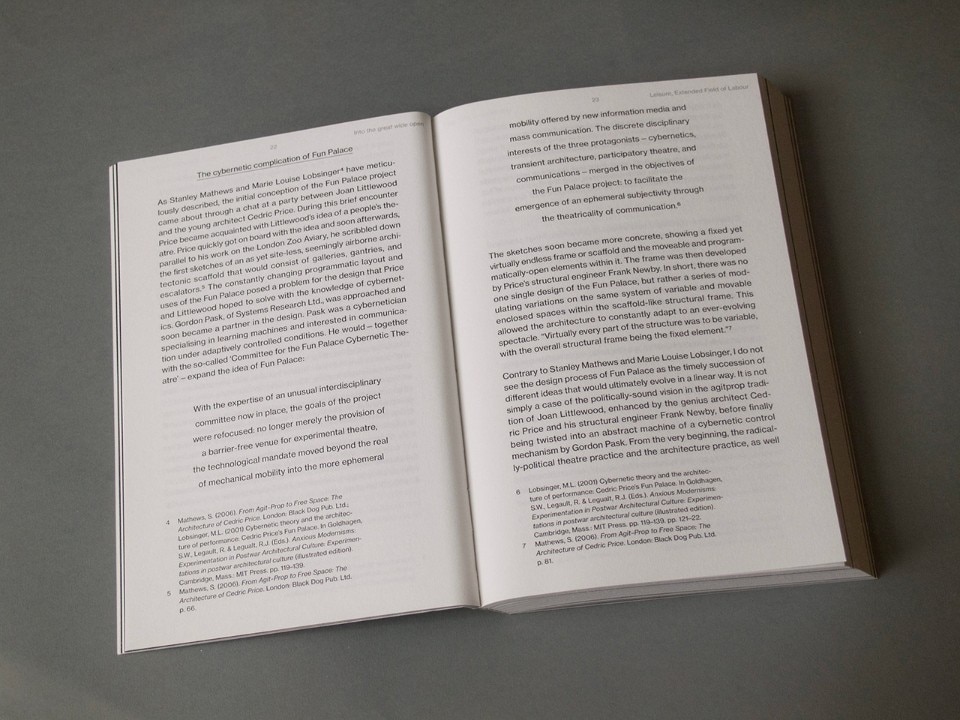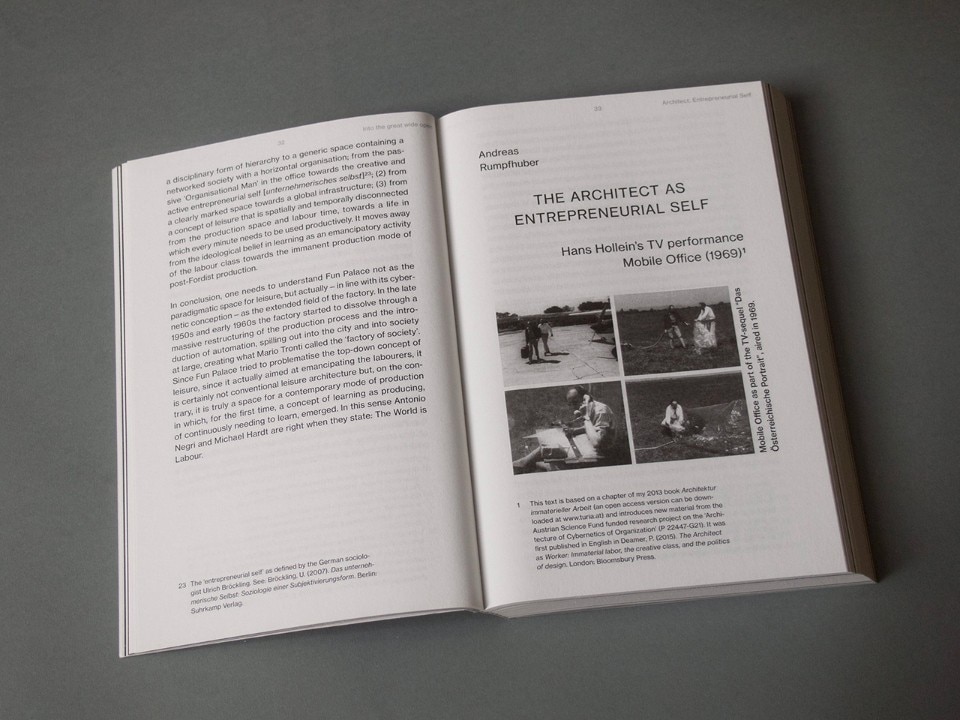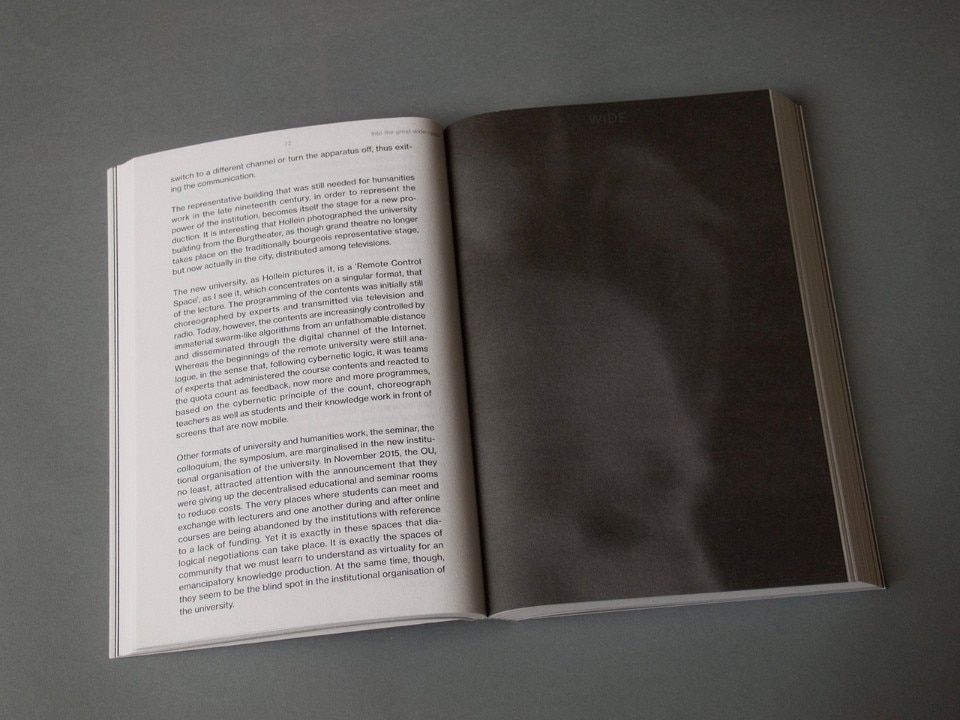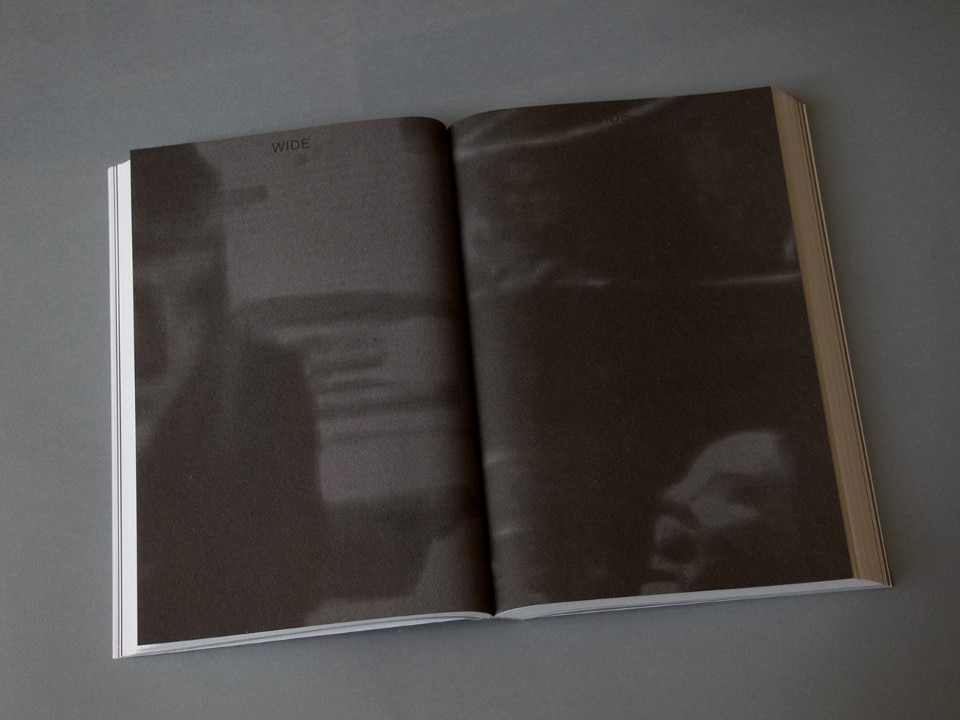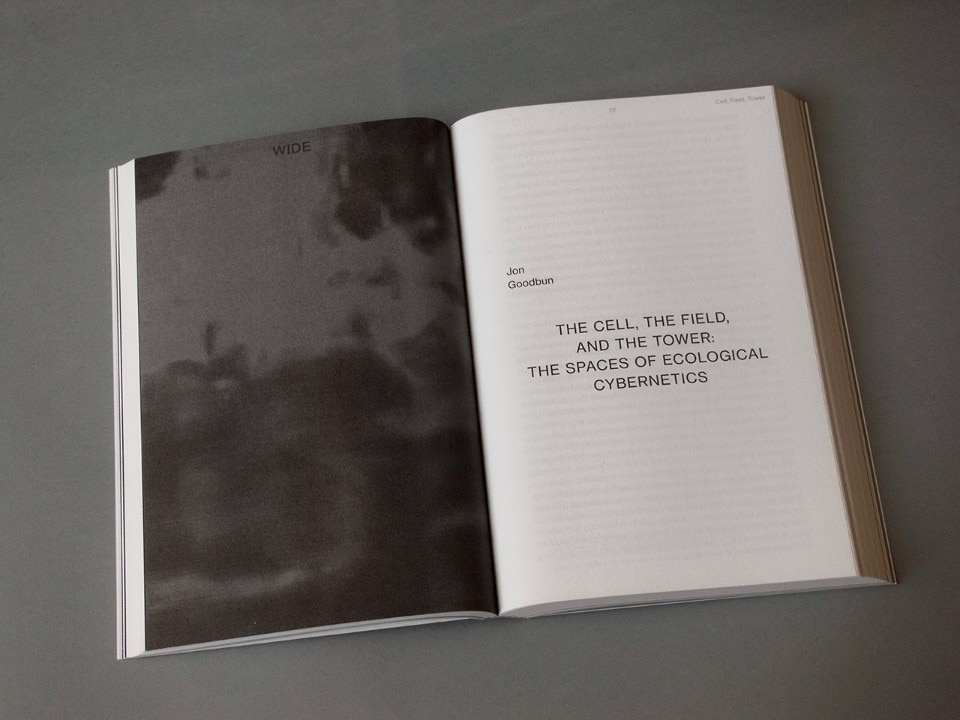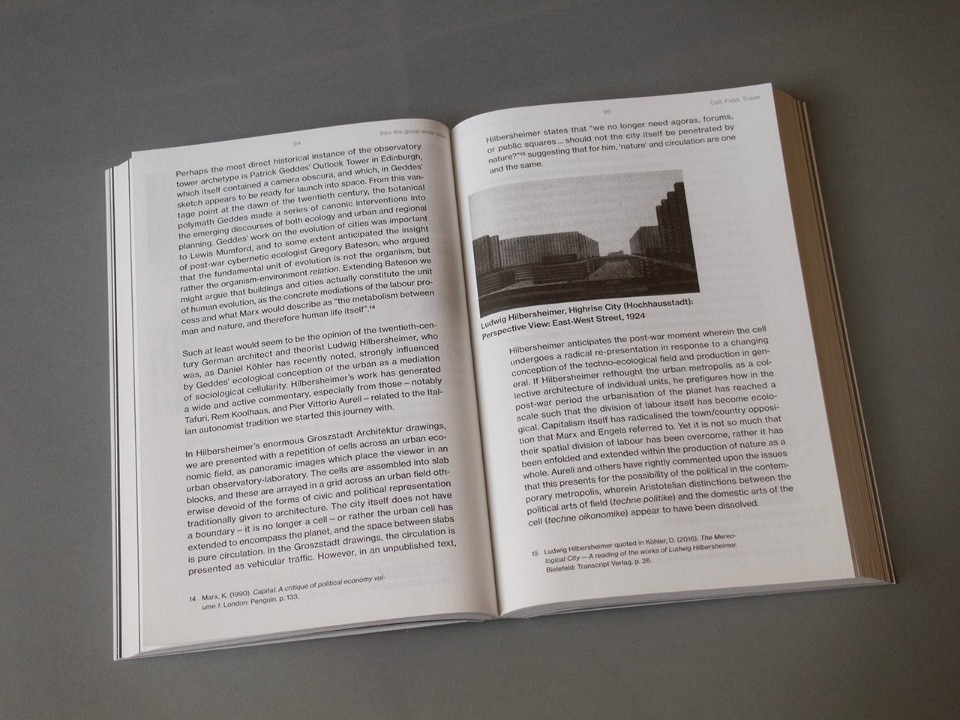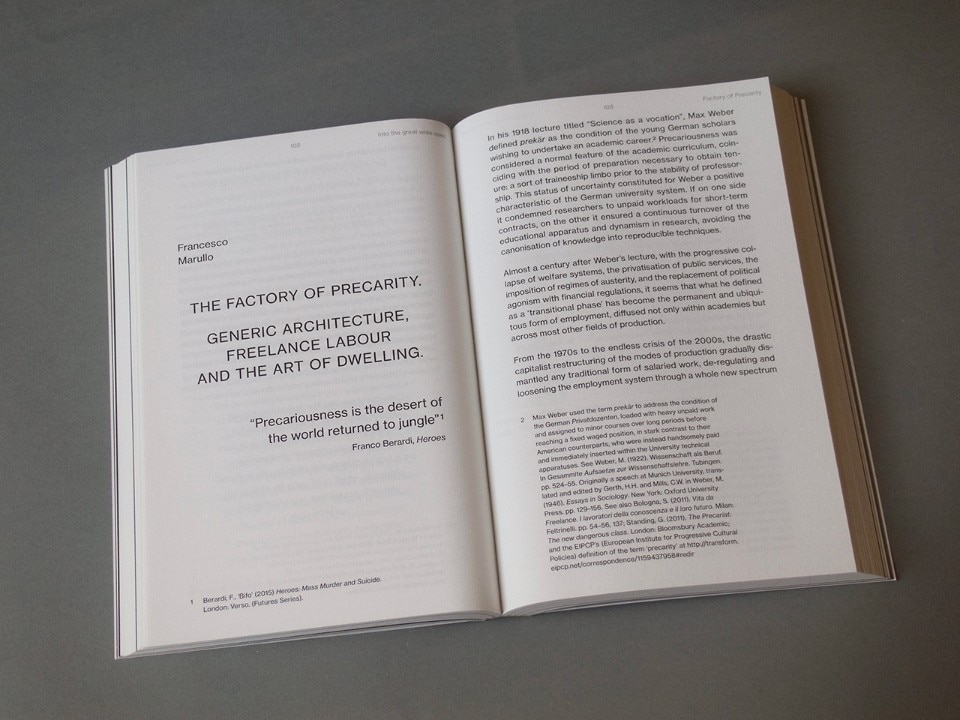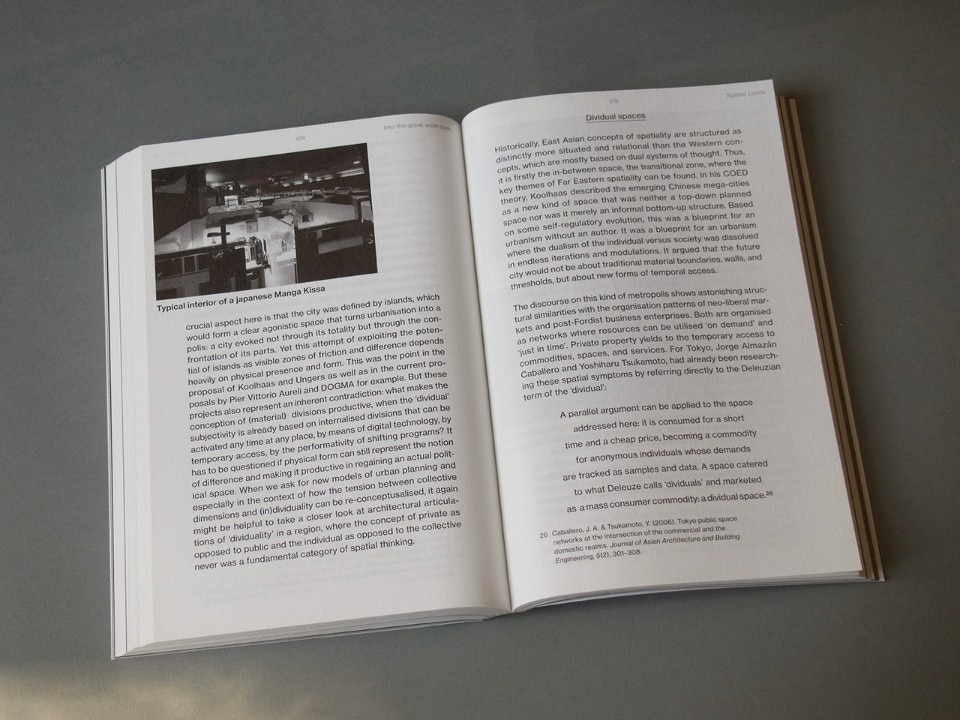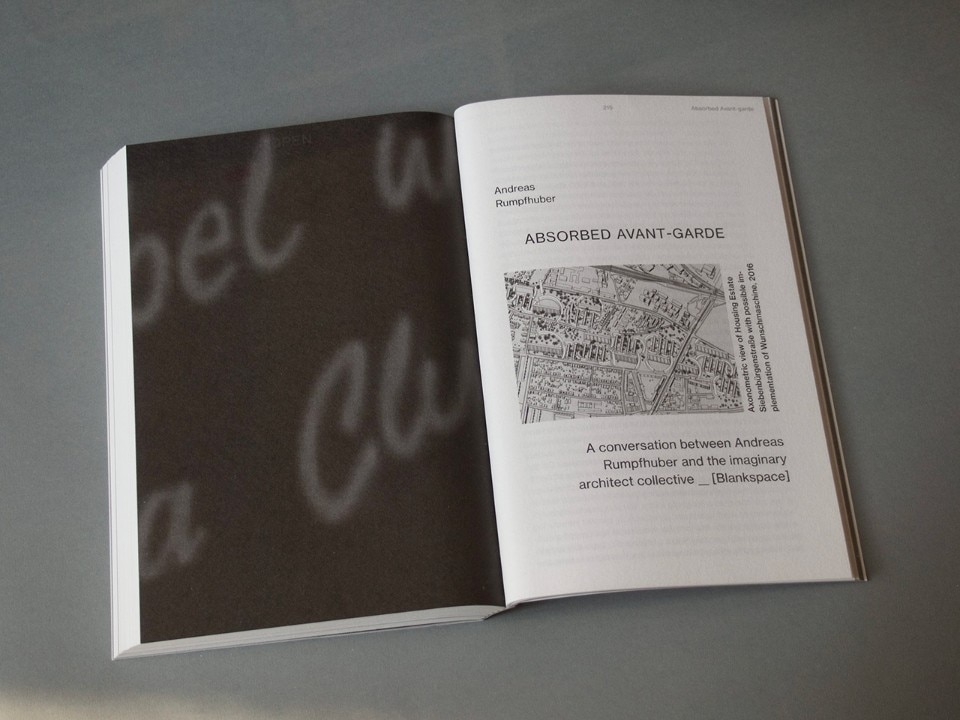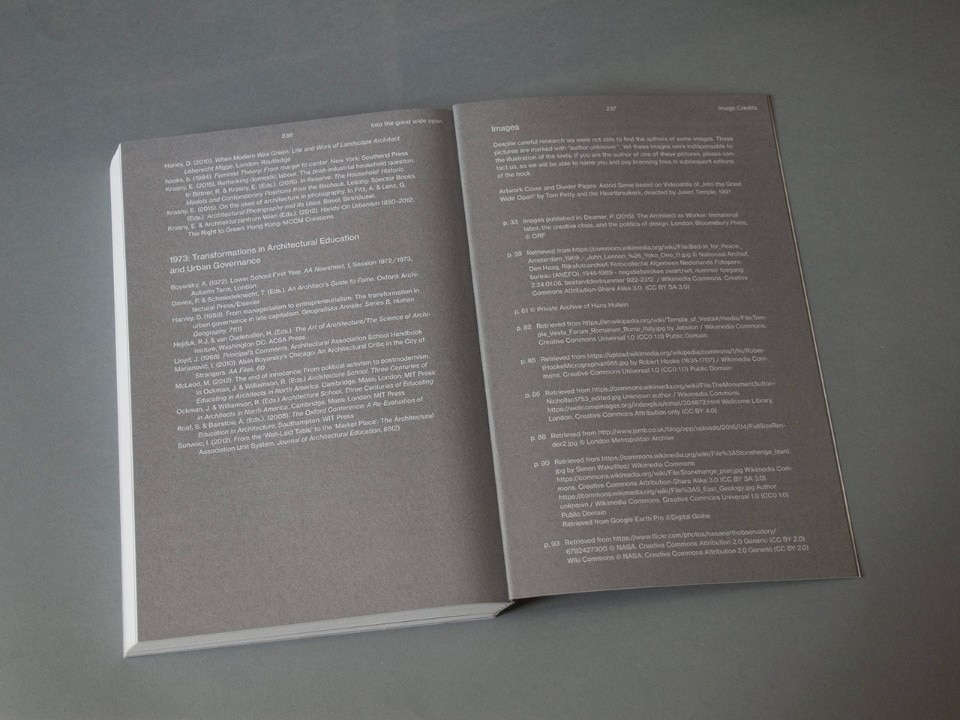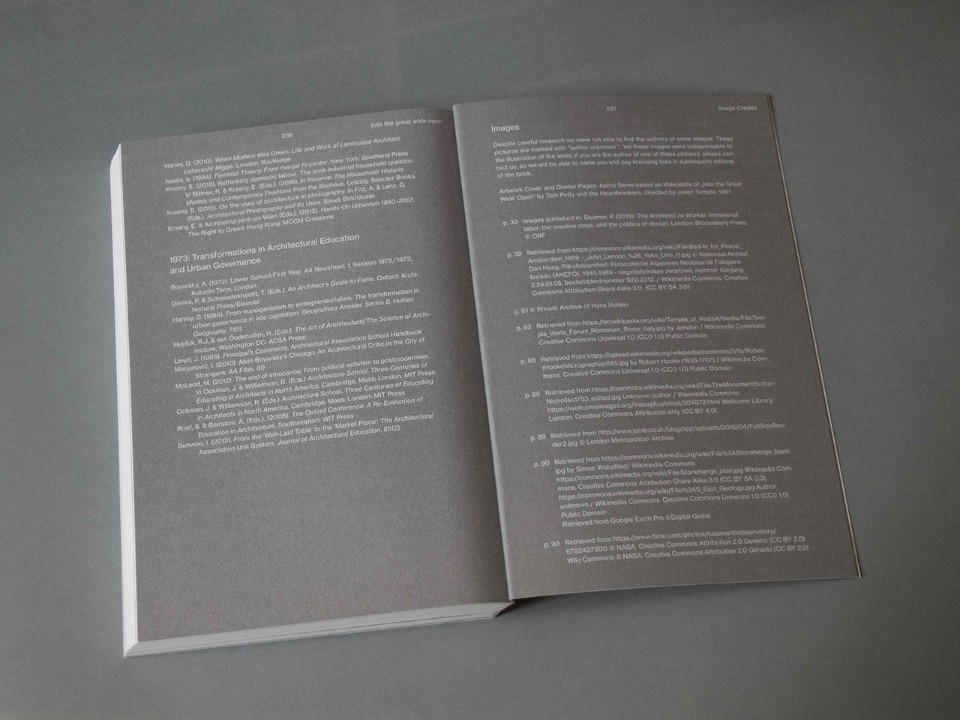“Today the bed is the paradigmatic site of contemporary forms of knowledge”. It is Sunday morning at around eleven, I am lying in bed and I have just started the third chapter of Into the great wide open, a book edited by the Austrian architect and researcher Andreas Rumpfhuber and published by DPR Barcelona.
Alongside me on the bed is my ever-present notebook and dozens of sparse pages, because – as usual – I lost the book that the publishing house sent me on a plane. “The bed, however, is by no means the place where we can lazily lie around to rest from work or even avoid it. Today the bed is the workplace for knowledge and creative work”. With a blend of terror and excitement I realise that, though lazily, I am to all intents and purposes working between the sheets.
I am working on Sunday Morning.
Half-written by Rumpfhuber, with the rest from another six similarly-minded researchers and friends, Into the great wide open is a collection of essays which explore the ephemeral confines between labour, work and architecture.
The Austrian architect not only speaks of ephemeral and immaterial architecture, but also of the situation of contemporary architects. He does so by analysing radical and experimental projects by architects such as Cedric Price or Hans Hollein and by accompanying the designs with reflections by “autonomous” Italian philosophers such as Mario Tronti and Maurizio Lazzarato.
Into the great wide open is a collection of essays which explore the ephemeral confines between labour, work and architecture.
The other essays included – Jon Goodbun, Dubravka Sekulič, Maria S. Giudici, Christian Teckert, Elke Krasny, Matthias Moroder – follow the author’s approach, rather than completing his train of thought: the analysis of the writers involved does not focus on the aesthetic or formal aspects of architecture, but on its political and social aspects.
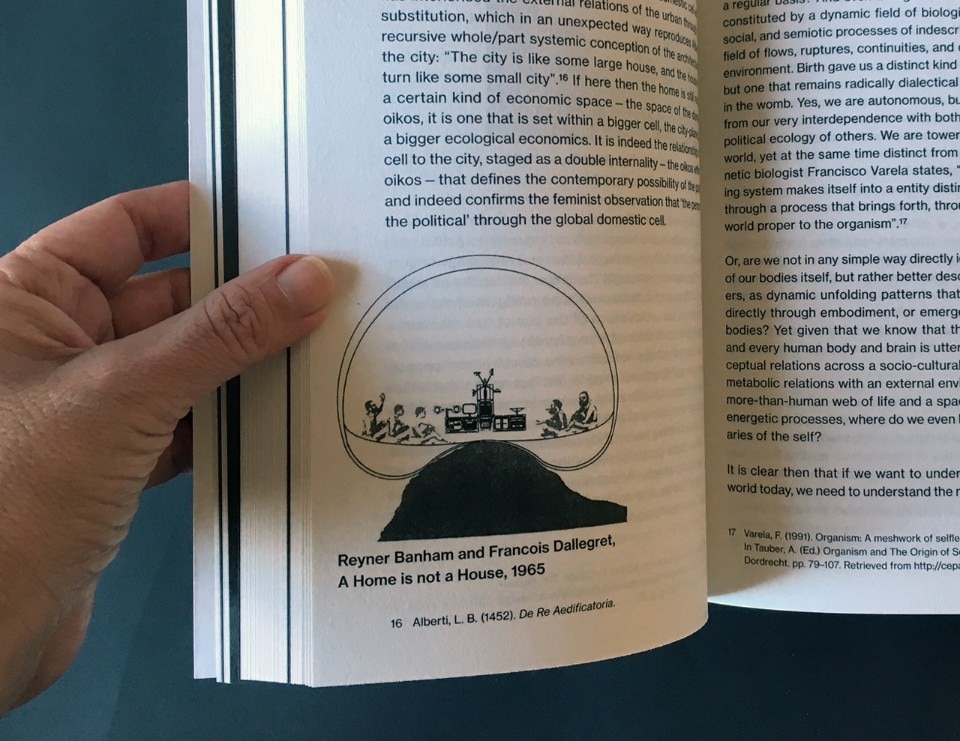
But what form does immaterial architecture have?
Immaterial architecture has neither walls or partitions, it defines neither an interior or exterior, but is instead composed of fluid areas in which architectural functions and elements are either denser or more rarefied, as is the case with the Kanagawa Institute of Technology workshops designed by junya.ishigami+associates.
Immaterial architecture continuously changes layout and programme, functioning as a hyper-connected cybernetic system which can be configured by the users themselves. “An infinite traffic junction, a boundless hub, [...] a ghostlike trace that operates as landscape than building”, is how the world-famous Fun Palace by Cedric Price is described.
Architect’s problem is no longer how to plan the world outside but how to design themselves.
Immaterial architecture is a thin membrane which surrounds us, or even a bubble, as is the case of the inflatable office by Hans Hollein. The performance 2:20 Minute, by the then-34-year-old Austrian architect is possibly the best case study for explaining the new situation of the contemporary architect, who simultaneously fills the roles of entrepreneur, manager and worker, concerned not only with the construction of buildings but also with communication and culture.
Inside the portable inflatable, Hollein still uses set squares and pencils – in 1969, laptops and smartphones were difficult to imagine – but faultlessly represents the nomadic and pervasive work of the architect, whose problem “is no longer how to plan the world outside – since there is no longer any outside to be planned – but how to design themselves and how to deal with the way the world constantly redesigns them”.
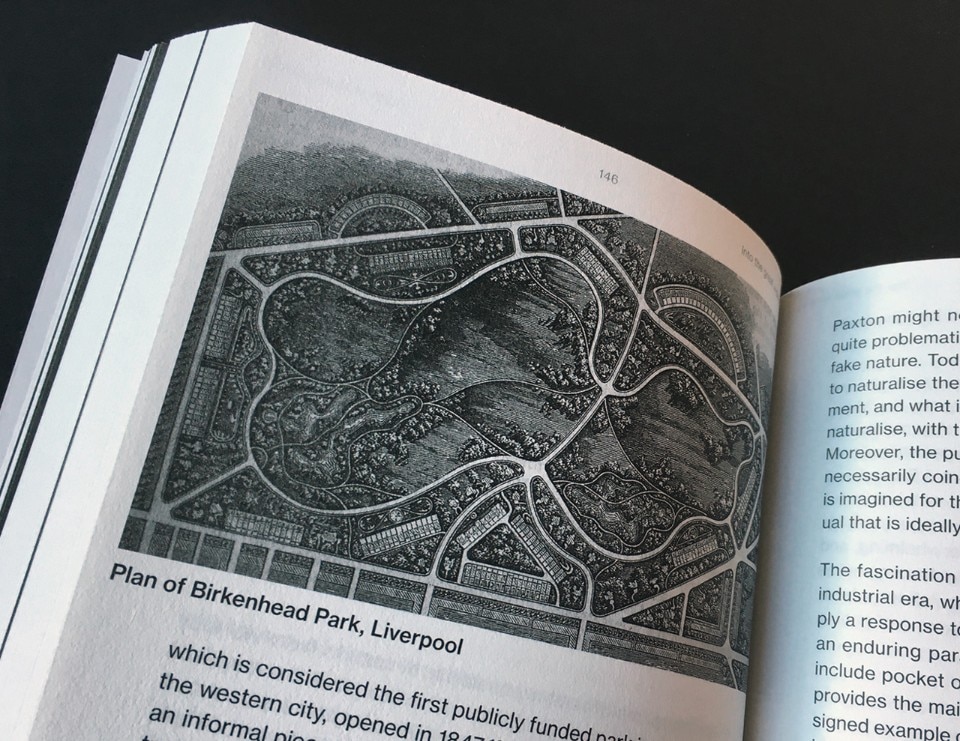
Although they analyse theoretical and avant-garde designs, the essays in Into the great wide open manage to examine tangible conditions. On reading the book, every architect, designer or creative worker can recognise themselves in its analyses. The author himself highlights with honesty that his considerations and the development of the book have been heavily influenced by his personal experiences. Rumpfhuber displays the same courage that characterises the works on depression by the cultural theorist Mark Fisher, who completed his political analysis by speaking of his personal experiences in a clear and touching manner.
Architecture is a stimulus for a very gradual cultural revolution.
Lastly, Into the great wide open shows how forward-looking the designs of certain fore-runners are. The projects present in the book prove to be contemporary without focusing on current affairs. Design is an instrument to imagine and experiment future societies and cities, in order to visualise them and render them tangible. Architecture is a stimulus for a very gradual cultural revolution. Never have we had such as need as now for investigations and viewpoints which look 100, 1,000 or 10,000 years into the future and which move beyond the precarious situation of an extreme present.
- Title:
- Into the Great Wide Open
- Editor:
- Andreas Rumpfhuber
- Contributors:
- Andreas Rumpfhuber, Francesco Marullo, Maria Giudici, Jon Goodbun, Elke Krasny, Matthias Moroder, Dubravka Sekulic, Christian Teckert, __ [Blankspace]
- Translations:
- Aileen Derieg
- Copy-editing:
- Daniel Lacasta Fitzsimmons
- Graphic design:
- Astrid Seme Studio
- Dimensions:
- 16 x 24 cm
- ISBN:
- 978-84-947523-1-5
- Publisher:
- dpr-barcelona
- Year:
- 2018


